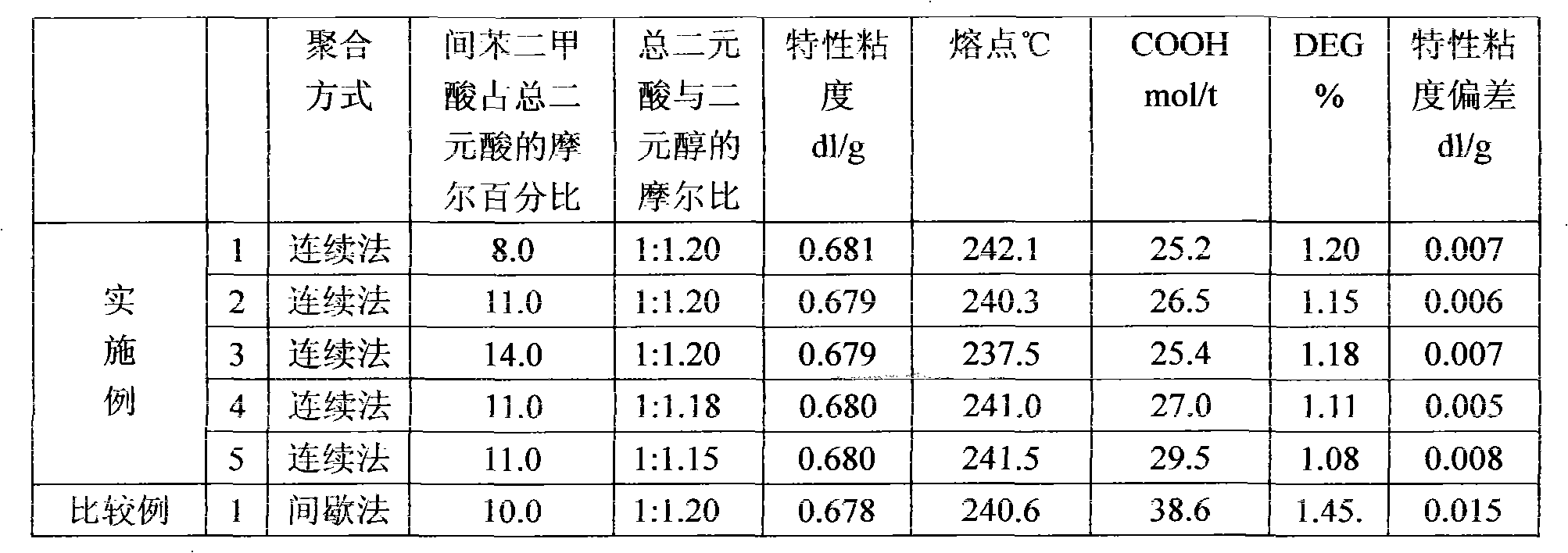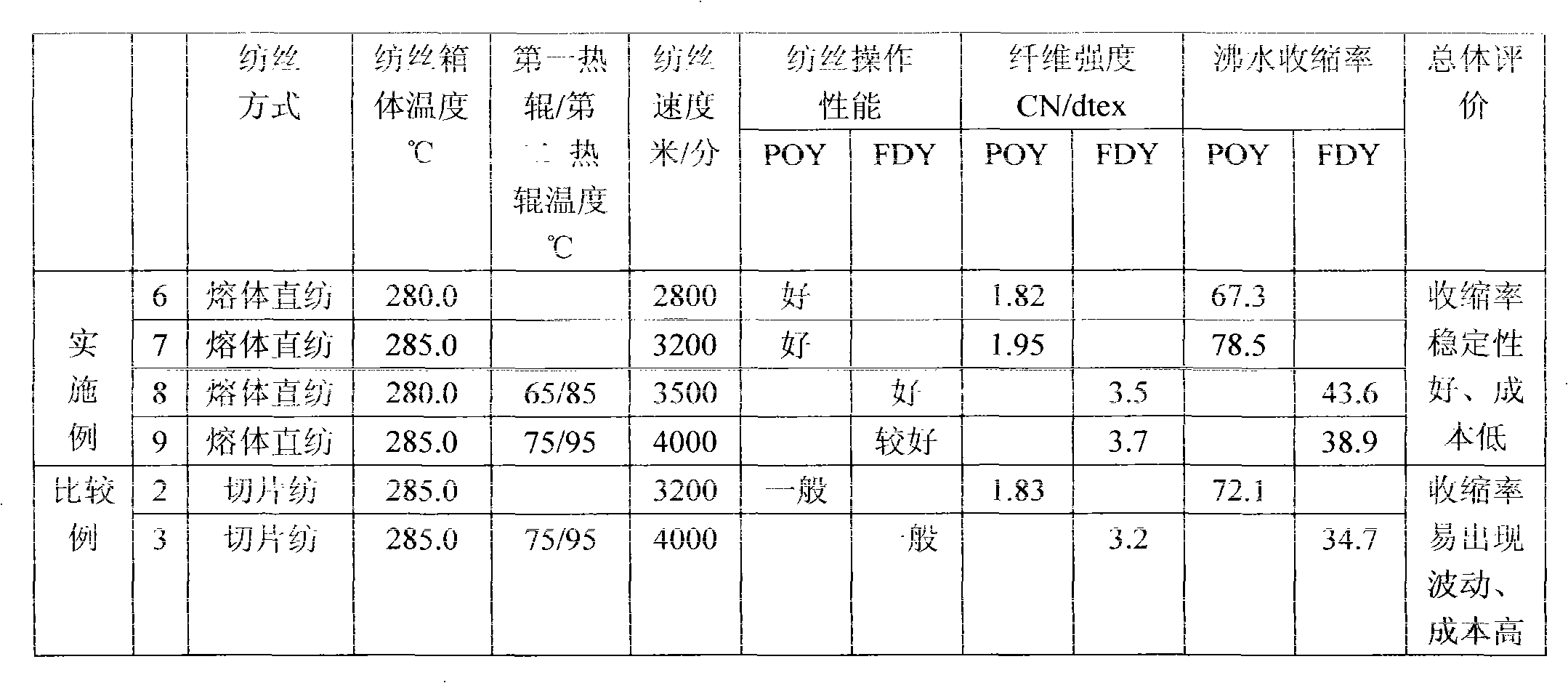Method for preparing continuous polymerization directly-spun high-shrinkage polyester filaments
A polyester filament, high shrinkage technology, applied in the direction of single-component copolyester rayon, melt spinning, feeding solution to the spinneret, etc., can solve the problem of the inherent quality, viscosity, etc. Large fluctuations in indicators, differences in product performance and other problems, to achieve the effects of excellent spinning performance, stable product quality, and stable shrinkage
- Summary
- Abstract
- Description
- Claims
- Application Information
AI Technical Summary
Problems solved by technology
Method used
Image
Examples
Embodiment 1
[0018] The preparation process of modified copolyester: set the production capacity of 5000kg / hr on the continuous polyester equipment, and purify terephthalic acid, isophthalic acid and ethylene glycol monomers according to the proportion of isophthalic acid in the total binary The molar percentage of acid is 8.0, the total dibasic acid (the sum of purified terephthalic acid and isophthalic acid) and glycol (EG) are added to the slurry tank at a molar ratio of 1:1.20, and at the same time, the beating tank is added The polycondensation catalyst ethylene glycol antimony of 450PPM (the weight percentage of the total production capacity), the above slurry is continuously and stably transported to the esterification-I reactor, and the pressure of the esterification-I reactor is controlled to be 0.12MPa, the temperature is 258.0°C, and the material level is 60.0 %, record the rate of esterification as 88.1%, the material in the esterification-I reactor is sent in the esterification...
Embodiment 2
[0020] The method of the present embodiment is basically the same as in Example 1, except that isophthalic acid accounts for 11.0 molar percentages of the total dibasic acids, controls the temperature of the esterification-I reactor at 259.0° C., and records an esterification rate of 88.5%. , control the temperature of the esterification-II reactor at 261°C, the measured esterification rate is 98.2%, and then pump the prepolymer to the polycondensation section, and obtain the modified copolyester according to the conventional polycondensation process. (See Table 1 for the results)
Embodiment 3
[0022] The method of the present embodiment is basically the same as in Example 1, except that isophthalic acid accounts for 14.0 molar percentages of the total dibasic acids, controls the temperature of the esterification-I reactor at 260.0° C., and records an esterification rate of 90.1%. , control the temperature of the esterification-II reactor at 262°C, and the measured esterification rate is 98.5%, and then pump the prepolymer to the polycondensation section, and obtain the modified copolyester according to the conventional polycondensation process. (See Table 1 for the results)
PUM
 Login to View More
Login to View More Abstract
Description
Claims
Application Information
 Login to View More
Login to View More - R&D
- Intellectual Property
- Life Sciences
- Materials
- Tech Scout
- Unparalleled Data Quality
- Higher Quality Content
- 60% Fewer Hallucinations
Browse by: Latest US Patents, China's latest patents, Technical Efficacy Thesaurus, Application Domain, Technology Topic, Popular Technical Reports.
© 2025 PatSnap. All rights reserved.Legal|Privacy policy|Modern Slavery Act Transparency Statement|Sitemap|About US| Contact US: help@patsnap.com


